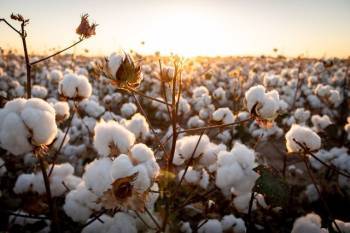NEW DELHI, 23 June 2024: Cotton farming in India remains a cornerstone of the nation's agricultural and industrial sectors, despite facing significant challenges in recent years.
According to recent insights from Q&Q Research Insights, cotton continues to be a vital fiber and cash crop, playing a pivotal role in the livelihoods of millions.
Cotton cultivation in India directly supports 6 million farmers, with an additional 40-50 million people employed in its trade and processing sectors. Notably, India contributes approximately 23% of the global cotton production, underscoring its importance on the world stage.
The industry, however, has encountered formidable obstacles, prominently highlighted by the cyclical infestation trend of Pink Bollworm (PBW). The years 2021 and 2023 witnessed severe infestations, resulting in a notable 10-15% reduction in overall yields. Farmers have responded with varied approaches to manage PBW, including increased early-stage insecticide applications in 2022, which tempered the infestation temporarily. However, a subsequent decrease in 2023 led to heightened PBW presence in later stages of crop growth.
Whitefly remains another persistent challenge, with substantial financial resources—approximately Rs. 1000-1500 per acre—allocated annually towards its control. Changes in pesticide usage reflect ongoing shifts, with newer molecules like Pyroproxifen, Thiamethoxam, and Diafenthiuron gaining traction while others lose efficacy.
Fungicide expenditure has also seen a consistent rise, demonstrating a 10% Compound Annual Growth Rate (CAGR) from 2019 to 2023. Leading fungicide brands such as Saaf, Contaf, Amistar Top, Custodia, and Antracol are widely utilized, averaging 0.8 applications per farmer.
The economic landscape of cotton farming has evolved significantly, with cultivation costs escalating at a robust 5.8?GR over the past five years. Despite these challenges, cotton remains a profitable venture, with an average profitability of 60% over the last half-decade, bolstered by favorable market conditions in 2021 and 2022.
Kharif 2023, however, presented a more subdued market environment for cotton farmers, with average selling rates approximately 8-10% lower than the Minimum Support Price (MSP). This decline was largely attributed to adverse weather conditions impacting crop quality and subsequent marketability.
Furthermore, technological adoption among cotton farmers has surged impressively, with smartphone accessibility skyrocketing from 42% in 2019 to an astounding 80% by 2023. States like Punjab and Gujarat lead in smartphone penetration, facilitating increased usage of digital payment platforms such as Paytm, BHIM, and Google Pay, which grew from 15% to 42% over the same period.
In conclusion, while cotton farming in India faces multifaceted challenges, including pest management and economic fluctuations, it remains resilient and adaptive. Continued innovation in crop protection strategies and technological integration are pivotal in sustaining the industry's growth trajectory amidst evolving global dynamics.
Image credit: sgs.com























